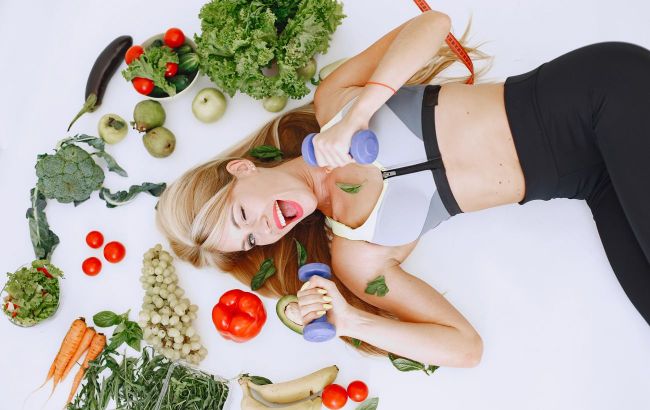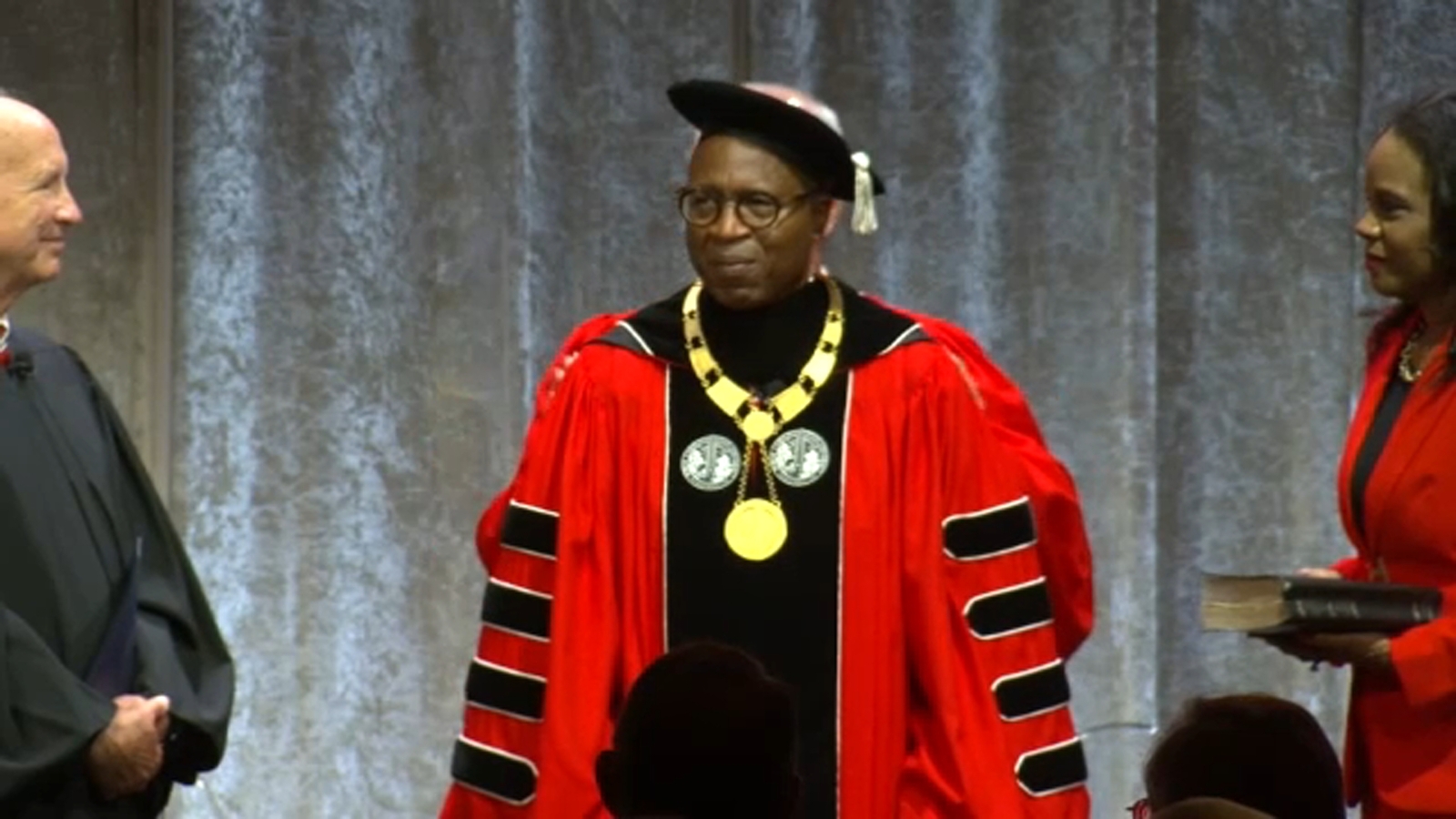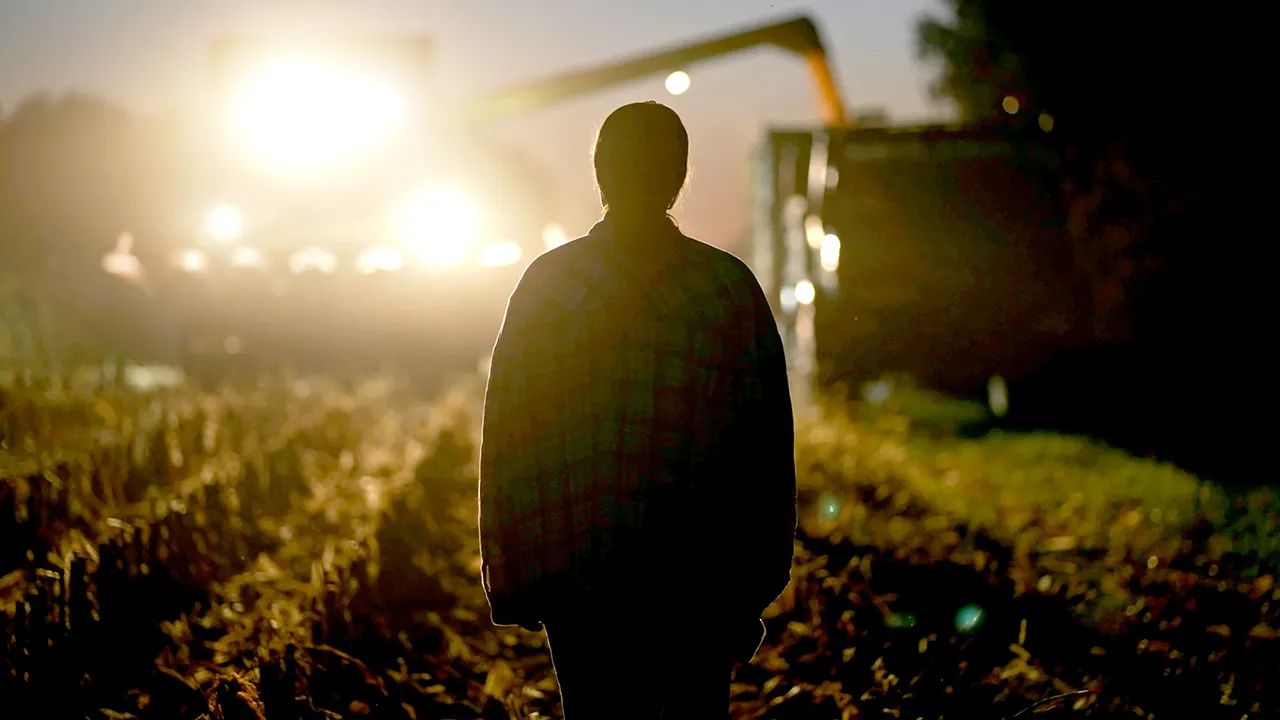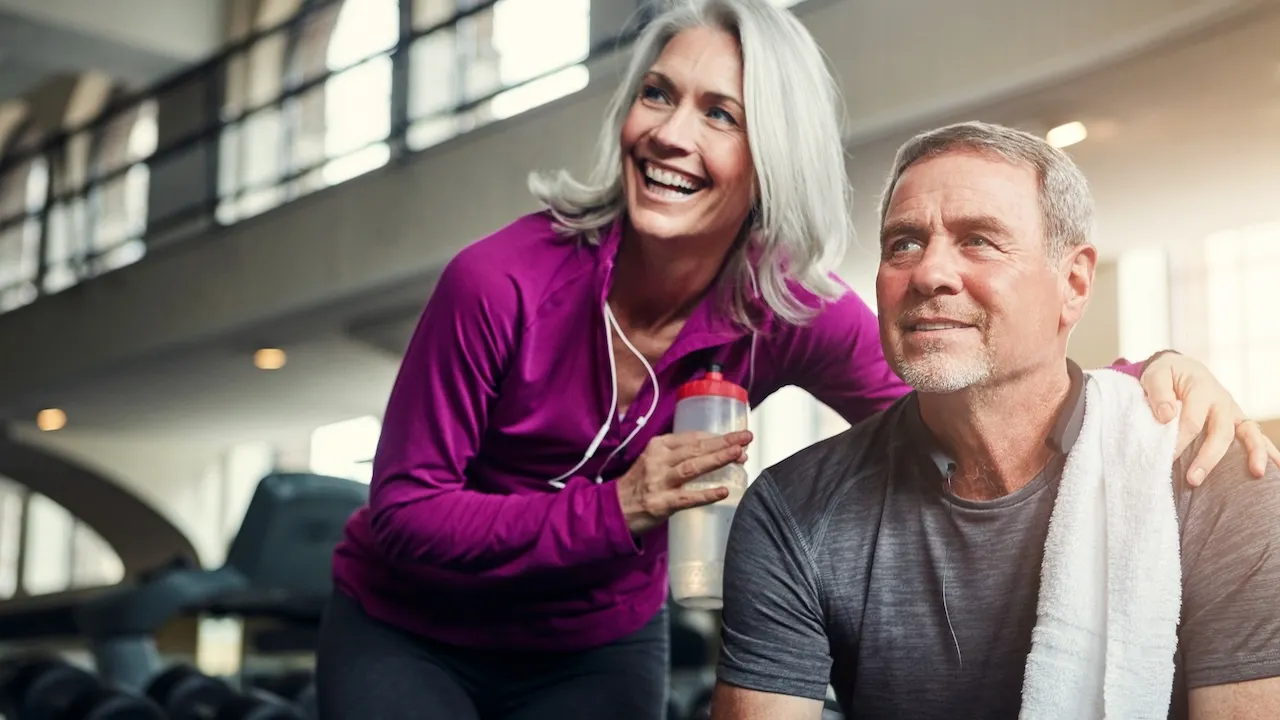Fitness
A celebrity personal trainer thought she had to do intense cardio to see results. Now, she strength trains and walks instead — and looks and feels better.
- The personal trainer Sana Shirvani used to regularly do intense workouts and restrict her diet.
- She ended up burned out, so shifted her focus to strength training and eating a balanced diet.
- Shirvani said she feels better physically and mentally.
Personal trainer Sana Shirvani learned the hard way that pushing her body more and more doesn’t yield better results.
The London-based trainer, whose clients include Halle Bailey and her fellow cast members of the 2023 live-action remake of “The Little Mermaid,” told Business Insider that doing too much intense exercise of varying types burned her out.
“I was always that gym bunny who would go to a million HIIT classes and completely batter myself and think that’s the right way to get results,” Shirvani, 32, said.
“I always used to pour from an empty cup. I’d have multiple burnouts a year and it got to a point in 2022 where I had such a bad burnout that it took me six months to recover,” she added.
Her approach to fitness has evolved “massively” since then. Seeking help from other trainers to reduce her workload, having a less restrictive diet, focusing on longevity, and replacing HIIT with strength training and low-intensity cardio have helped her feel better about her appearance and feel less anxious and stressed, she said.
“It was such a big wake-up call for me,” Shirvani said. “I was mentally really not in a good place for a long time.”
Shirvani is among those who have realized in recent years that more is not always better when it comes to fitness. Focusing on recovery has become more important to many, reflected by the increasing demand for smartwatches and rings that measure how well you’ve recovered as well as moved.
Here’s how Shirvani’s priorities have changed.
Fred Ellis
Low-intensity exercise to minimize stress
While short spells of intense exercise can bring health benefits such as improved cardiovascular fitness, research suggests multiple, long HIIT classes each week can put stress on the body. However, personal thresholds vary depending on lifestyle, stress, and fitness levels.
Instead of regular hardcore workouts, Shirvani does low-intensity steady state (LISS) cardio, such as walking, climbing on a stair master, or incline walking on a treadmill.
She uses the time to relax and listen to a podcast or just be with her thoughts.
Strength training for longevity
Shirvani does a minimum of four resistance training sessions a week — two lower body, two upper body — and a full body workout, plus rehab exercises if she has time for a fifth session.
Strength training has helped Shirvani build muscle, but her health is a bigger priority than her appearance. She wants to continue moving well and being pain-free and preparing her body for potentially carrying a child, as well as the menopause. She hopes the workouts will prevent age-related muscle loss, and maintain joint health, balance, and stability, she said.
Research shows that strength training is crucial for healthy aging as it helps combat age-related muscle and bone density loss.
“Every single human on this planet should be strength training in some sort of capacity,” Shirvani said.
However, she stresses that as someone without children who works in the fitness industry, her routine may not be manageable for most people.
“You can still reap those benefits with two or three weekly strength training sessions,” she said.
Fred Ellis
Eating a balance of protein, carbs, and fats
Shirvani used to think she had to eat plain meals like chicken, broccoli, and rice and stick to “crazy” calorie deficits to be healthy and leaner.
Now, she feels better for eating more and has learned that she can make nutritionally balanced dishes that are flavorsome using spices and sauces.
Shirvani doesn’t eliminate any foods, and still enjoys chocolate and desserts.
“Moderation is such an annoying word, but it’s genuinely everything in moderation,” Shirvani said. “Food is there to be enjoyed.”
Eating enough protein is her priority because it helps her body recover from workouts. Her staple meals include chicken salads topped with cheese, shepherd’s pie, and homemade turkey burgers.
She’s also started paying more attention to her energy levels as she’s got older. On days when she ate a high-carb breakfast, such as a bowl of oatmeal, she found she was hungry a couple of hours later and felt her energy levels slump.
In contrast, when she has a high-fat and high-protein breakfast, she feels satiated for longer.
“This is so personal though, this does not apply to every single person. I know people who have oats in the morning and they’ve got so much energy,” Shirvani said.
Sleeping for recovery
Sleeping well is Shirvani’s top priority when it comes to recovery, and for that reason, she never goes on her phone in bed.
“That’s helped me massively,” she said.
Research suggests that blue light exposure from screens such as phones could disrupt sleep.
Shirvani takes saunas when she can to relax in the evening. She always gives herself time to wind down before sleeping, rather than working late and going straight from emails to bed, she said.
She’s also a fan of offloading her brain through journalling and ice baths a couple of times per week.

Fitness
Fitness coach shares simple ‘5-second exercise’ every woman should do daily to feel healthier and stronger

Finding time for health and fitness isn’t easy, especially when life moves at full speed. Between long commutes, desk jobs, and constant multitasking, many women struggle with poor posture, stiffness, and low energy. But what if the fix was simpler than you think? Lifestyle and fitness coach Luke Coutinho shares in his September 29 Instagram post a simple 5-second exercise that he believes every woman should know. (Also read: Apollo hospital orthopaedic surgeon with 28+ years of experience explains ‘why your knees hurt while climbing stairs’ )
What are Kegel exercises and why should women do them
Women, try this right now. “Imagine you’re trying to pee, and I tell you to stop midstream. Try that. Which muscles did you clench?” says Luke. “If you did that right now, you just did a Kegel exercise.” He explains that Kegel exercises are one of the most powerful yet underrated practices for women’s health. “They strengthen your pelvic floor, the muscles that support your bladder, uterus, and rectum,” says Luke.
According to Luke, these exercises do far more than most people realise. “By doing Kegels, you strengthen and increase blood flow to your pelvic region,” he explains. “That helps with issues like urine incontinence, nighttime urination, and weak bladder control.”
He adds that Kegels are especially beneficial after childbirth. “Post-delivery, the vaginal walls can weaken if you’ve had a natural birth. Doing Kegels strengthens your vaginal muscles, improving intimacy and sexual satisfaction too.”
They also help prevent pelvic organ prolapse, a common condition where the bladder or uterus shifts downward. “Kegel exercises help support the entire area holding your bladder, uterus, and rectum,” Luke notes.
How do you perform Kegel exercises correctly
“The right way to do Kegels is the same way I asked you earlier, imagine you’re peeing and stop midway,” he explains. “You don’t need to clench too hard. Avoid tightening your abs or thighs, just a gentle squeeze.”

Luke recommends starting small:
- Do 3 sets, twice a day.
- Clench for 5 seconds, relax for 5 seconds.
- Gradually increase to 15 seconds of clenching and 10 seconds of rest as you get stronger.
“You can do these anywhere, on a flight, in a car (if you’re not driving), at home, before bed, or right after waking up,” Luke says. “These little things are incredibly powerful for your reproductive and overall health.”
He reminds viewers, though, that Kegels are not a replacement for medical care. “If you have a prolapse or other issue, please see your doctor,” he advises.
“Remember,” Luke concludes, “Kegel exercises may take just a few seconds, but staying consistent with them can truly transform your pelvic health and long-term wellbeing.”
Note to readers: This report is based on user-generated content from social media. HT.com has not independently verified the claims and does not endorse them.
This article is for informational purposes only and not a substitute for professional medical advice.
Fitness
Food vs exercise: Which actually helps you lose weight

Why nutrition is more important than exercise
“To simplify it a lot: adjusting your diet reduces body fat, while physical exercise helps preserve muscles during weight loss and supports overall health,” the trainer explains.
Mandziak notes that only about 10% of the calories the body burns come from exercise.
“Three workouts a week burn just 1,000 calories, while the body burns 18,000 calories in a week,” he emphasizes.
How the body burns calories
“Around 85% of all calories burned are expended without deliberate physical activity. The heart, brain, kidneys, and liver burn about 1,000 calories per day. That’s almost half of all calories the body burns, including physical activity,” the fitness trainer says.
According to him, 10% of calories are spent on digestion, 15% on daily activities, and only the remaining 10% on exercise.
Why exercise makes you hungrier
“Scientific data shows that 80% of calories burned are compensated. When I start moving more, my body senses the calorie loss and urges me to eat the calories I burned. Some people even reward themselves with tasty food after an effective workout,” Mandziak explains.
He adds that people often overestimate the calories burned during exercise. Those who are more active consume more calories, but they also burn more, and don’t overeat.
Mandziak notes that physical activity improves sensitivity to the satiety hormone leptin.
“If I’m physically active, my brain senses this hormone well. If I’m inactive, it senses it poorly, which can lead to overeating,” he adds.
Why strength training is important
“When we consume fewer calories than our body needs, it must break down fat to make up for the deficit. The body can also break down muscle,” the trainer explains.
According to him, to prevent this, it’s necessary to signal to the body that muscles are needed and being used. If a certain organ, tissue, or function isn’t used, it deteriorates.
Mandziak emphasizes that strength exercises provide this signal. Additionally, exercise improves the regulation of eating behavior, and strength training helps preserve muscle mass.
Earlier, we revealed how to eat and lose weight in autumn.
Fitness
Ohio State conducts research study about exercise and improving mental health

Training session with a student participant of the Exercise is Medicine™ for Student Resilience research study. Credit: Courtesy of Carmen Swain
The College of Education and Human Ecology is exploring how physical activity can improve students’ mental health.
The college is partnering with Wilce Student Health Center and Student Life Recreational Sport to conduct the study called “Exercise is Medicine™ for Student Resilience” to implement structured exercise into students’ lives.
The study targets those who aren’t active or are stressed to help enhance their mental health and resilience, Carmen Swain, director in health and exercise science and principal investigator of the study, said.
“Our main mission is to try to impact mental health and college students, that’s our goal,” Swain said.
The program is led by trained undergraduate students who work as research assistants or personal trainers. The fitness coaches meet weekly with student participants for nine weeks to do exercise sessions, Swain said.
Participants are required to wear a fitness tracker called a “WHOOP” that measures their health and fitness data throughout the program, Swain said.
“It measures a lot of your biometric data,” Swain said. “So, it measures your heart rate, your sleep and it’s pretty cool.”
The fitness tracker also helps researchers monitor participants’ stress levels to see if they are decreasing throughout the study, Jean-Pierre Khouzam, a second-year master’s student in kinesiology and research lead for the study, said.
“I like to call it a nicer Apple Watch,” Khouzam said. “Never take it off, you charge it on your wrist and it gives you a lot of insights. A lot more insights than just a normal Apple Watch would give you.”
Researchers also conduct pre- and post-testing to measure the changes in the students’ physical fitness and mental health status, Swain said.
Part of the testing is having participants take surveys that score measures like depression and loneliness, Swain said.
“The goal of the program is to see if the physical fitness programming led by these peers impacts their scores on these surveys,” Swain said.
The research is especially relevant now because many Ohio State students are struggling with high levels of anxiety, depression and loneliness, Swain said.
“Mental health is a crisis, especially for college students,” Swain said.
Many studies show that exercise can improve mental health, which is why the research study was developed, Khouzam said.
There are currently seven students participating in the study, and the goal is to have 20 participants by the end of the next semester, Khouzam said.
He hopes the undergraduate leads will gain valuable skills from the experience and see the impact they are making on others, Khouzam said.
“Hopefully they have an impactful experience to where they understand what research is about,” Khouzam said. “And then also they’re helping other people, which is huge in my eyes.”
-

 New York1 week ago
New York1 week agoVideo: How Mamdani Has Evolved in the Mayoral Race
-

 News1 week ago
News1 week agoVideo: Federal Agents Detain Man During New York City Raid
-

 News1 week ago
News1 week agoVideo: Driver Crashes Car Into Security Gate Near White House
-

 News1 week ago
News1 week agoVideo: Inside Our Reporter’s Collection of Guantánamo Portraits
-

 World1 week ago
World1 week agoTrump to host NATO chief at White House as Putin meeting collapses
-

 Politics1 week ago
Politics1 week agoJack Smith defends subpoenaing Republican senators’ phone records: ‘Entirely proper’
-

 News1 week ago
News1 week agoNew York City ICE raid nets 9 arrests of illegal aliens from West Africa, 4 protesters also arrested
-

 News4 days ago
News4 days agoWith food stamps set to dry up Nov. 1, SNAP recipients say they fear what’s next

















